Artifacts found at the ‘Birthplace of Texas‘ have revealed new insights into the abandoned town that was home to 1,000 people in 1835.
Archaeologists at Texas A&M University uncovered more than 10,000 objects in Washington along the Brazos River, which tells the story of life as an early Texan shortly after the state won its independence from Mexico in 1836.
Excavations unearthed the base of a brick fireplace marks the spot where a tavern once stood, which supplied travelers with food and a room – specifically Davey Crockett, who spent two days in the town before his famed journey to the Alamo.
Objects like nails, knives, glass and ceramics, along with traces of a log cabin used as Sam Houston’s presidential office were also discovered and paw prints of long-forgotten pets that roamed the streets.
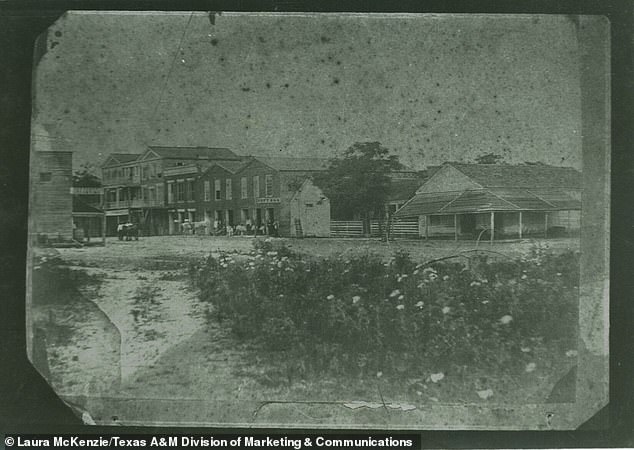
Archaeologists at Texas A&M University uncovered more than 10,000 objects along in Washington, founded around 1835, which tells the story of life as an early Texan
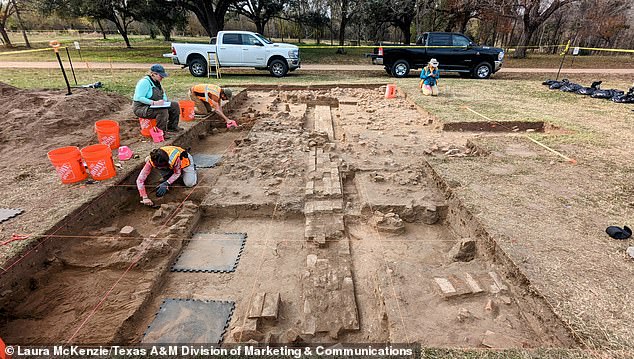
Excavations unearthed the base of a brick fireplace marks the spot where a tavern once stood, which supplied travelers with food and a room
Jonathan Failor, alumni of the university who is serving as site manager, told DailyMail.com: ‘The townsite is previously known and has been a protected historic site since 1916.
‘The recent archeology project is giving us new insights into the town not previously known.’
Failor and his team uncovered coins from the ruins of the tavern, including an 1831 US dime and an 1820 Spanish silver coin with the image of King Ferdinand VII, who ruled over Spain in the early 19th century.
Before the town was officially formed, it was known as the spot where the Labahia Road crossed the Brazos River.
‘The road, connected Mexico and the US, and the coins are a neat way to draw a parallel between the two,’ Failor told DailyMail.com.
‘You can imagine those coins traveling and meeting [at the tavern].’
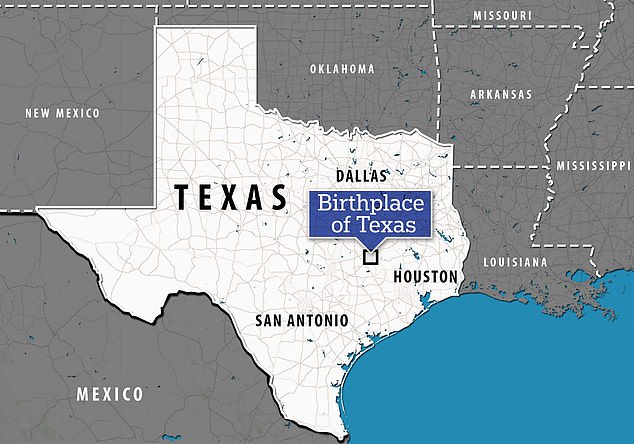
Artifacts found at the ‘Birthplace of Texas ‘ have revealed new insights into the abandoned town that was home to 1,000 people more than 200 years ago
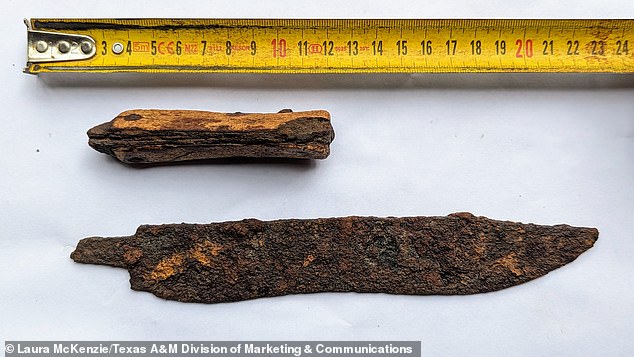
A pair of knives were uncovered at the townsite. The top is a folding knife and the bottom is a blade that is missing its handle
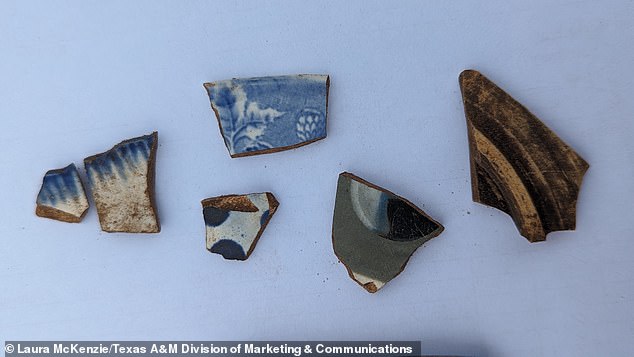
Objects like nails, glass and ceramics were also uncovered
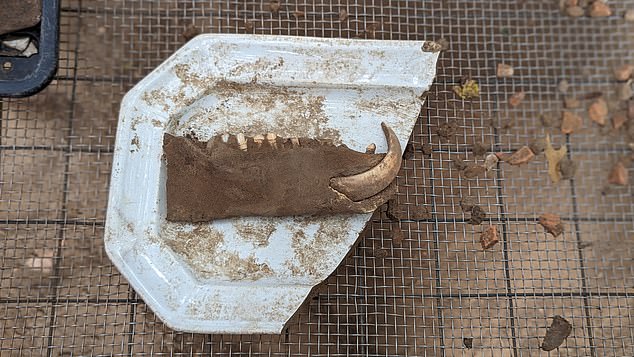
The team found a trash pit at the site, revealing even more secrets of the town. The artifacts included a pig jaw bone and ironstone platter, providing a look at the food eaten by early settlers
The excavations also uncovered the largely intact brick floor of a structure built around the late 1830s, which will be exposed when renovations re-create the building around it.
Failor explained that the brick floor tells the story about two buildings, with the first being an early store house that was later transformed into a two-story building in 1854.
‘There are layers of history in that location,’ he said.
The team also found a trash pit at the site, revealing even more secrets of the town.
The artifacts included a pig jaw bone and ironstone platter, providing a look at the food eaten by early settlers.
A horn comb and several knives were also found at the abandoned townsite.
The ‘Birthplace of Texas’ is undergoing a $51 million renovation to provide modern-day visitors with a more complete look at the town and how it fits into Texas’s early history.
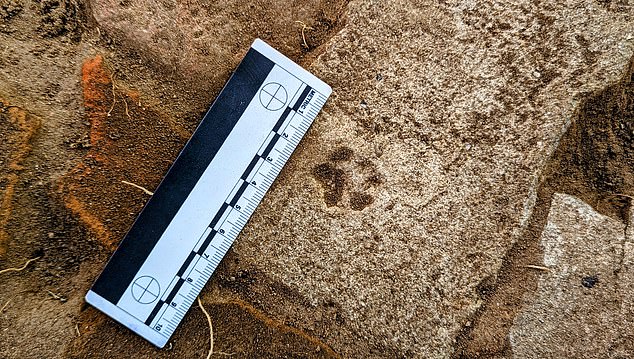
The team spotted a cat pawprint at the site
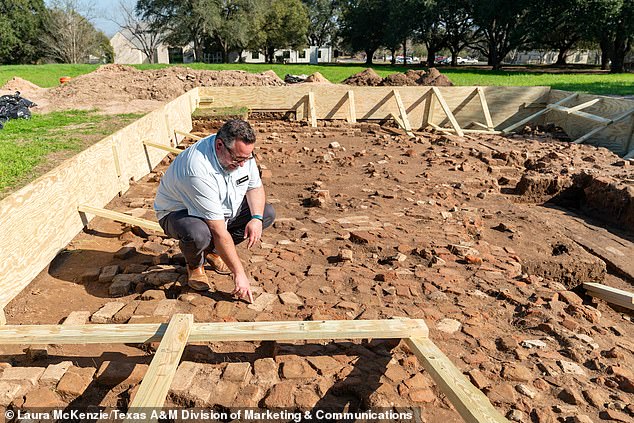
Failor (pictured) explained that the brick floor (pictured) tells the story about two buildings, with the first being an early store house that was later transformed into a two-story building in 1854
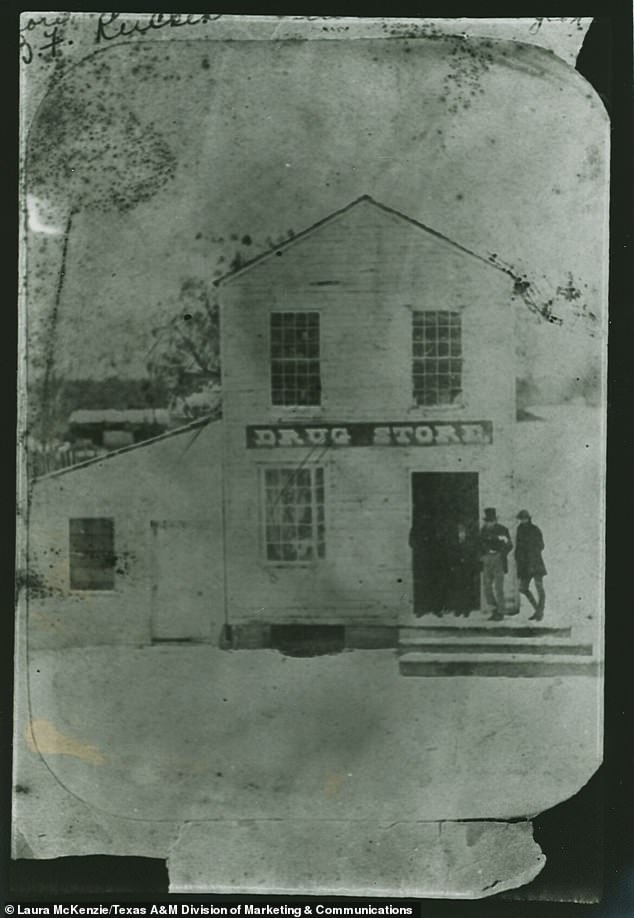
Pictured is one of the few remaining images of the town, showing a drug store
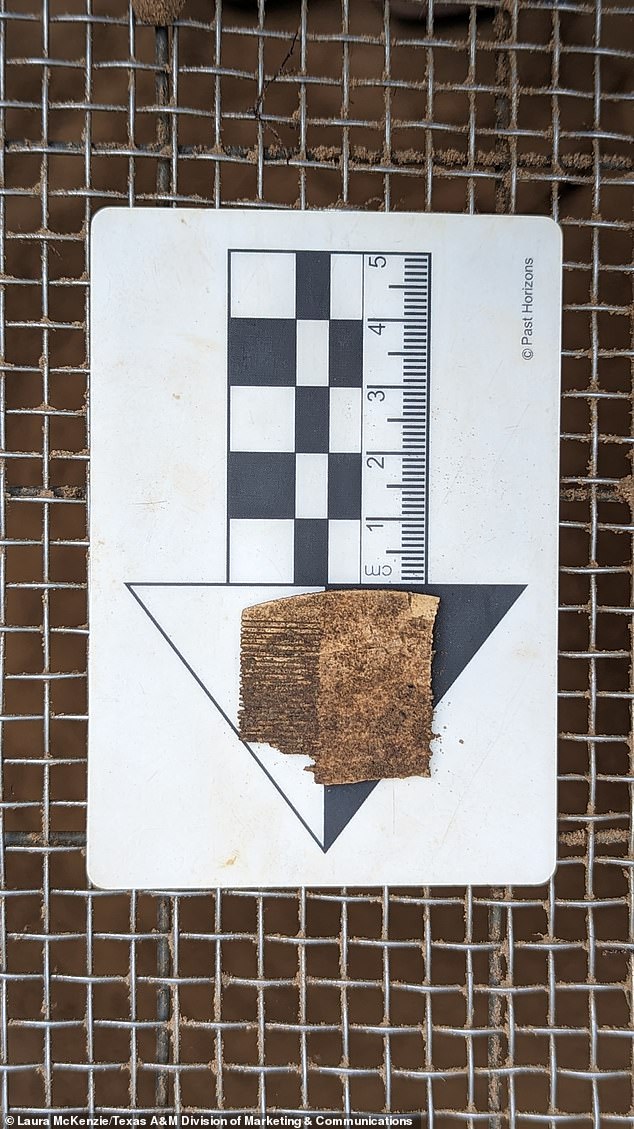
The ‘Birthplace of Texas’ is undergoing a $51 million renovation to provide modern-day visitors with a more complete look of the town and how it fit into Texas’s early history. Pictured is a horned comb found during excavations
The renovation work is scheduled to be completed by mid-2025 with full-size recreations of the newly discovered tavern and Houston’s log cabin office that was originally a family home built by early settlers.
Washington-on-the-Brazos, officially named Washington, is located in the upper northeastern corner of what is now Washington County and was a major political and commercial center in early Texas.
Approximately 300 families settled in the town in 1821, when Texas was still part of Mexico.
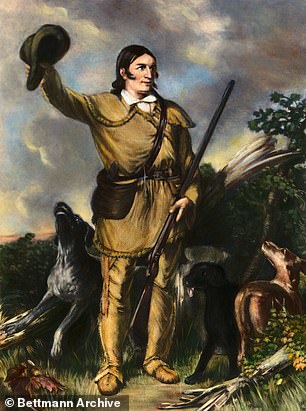
Davy Crockett spent two days in the town before making is famous journey to the Alamo
Over the next decade, more settlers moved into the town, the town was renamed Washington after a place in Georgia.
Texas saw a growing influx of American settlers shortly after Washington was formed, which led to skirmishes with Mexico.
However, the Texas Revolution that was fought from October 1835 to April 1836 resulted in the state winning its independence.
Houston signed the Texas Declaration of Independence and led his troops to victory at the Battle of San Jacinto on April 21, 1836.
Around the same time, Washington had established itself as a supply stop for weary travelers who sat at the tavern, visited a nearby drugstore and purchased goods at several shops that lined the dirt roads.
In many ways, Failor said in the press release, the real story is less about what is still there and more about what is not
He and his team plan to build a representation of the buildings and the discoveries made will help them put the missing pieces together.
Failor told DailyMail.com that the town was abandoned after locals resisted to bring in the railroad in the 1850s.
‘The townspeople relied heavily on the river and wanted to put their investments into ferries and steam boats,’ he said.
‘We can speculate that had they said yes to the railroad, the historic may not exist today.’













